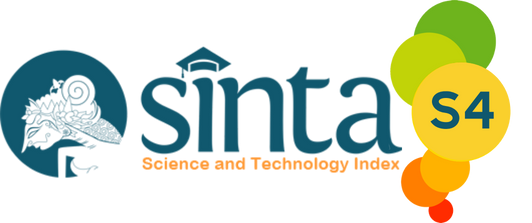Measuring lower secondary school students’ attitude towards science across gender and socioeconomic status: Validation of the BRAINS instrument
DOI:
https://doi.org/10.52434/jkpi.v5i1.42594Abstrak
The attitude toward science has been studied among science education researchers for over 50 years. This study aims to test the validity of BRAINS (Behaviors, Related Attitudes, and Intentions toward Science) instrument using the IRT analysis and measure science attitude among lower secondary school students by comparing gender and socioeconomic status (SES). About 30 items of BRAINS instrument was administered to 1001 students. IRT analysis was run using TAM package in R to examine the instrument dimensionality, the item fit properties, the EAP (Expected A Posteriori) reliability, and WLE (Weighted Maximum Likelihood Estimation) reliability while LORDIF package in R was used to test the generalizability. Later, two-way ANOVA and clustering of students’ response were performed using the SPSS and mclust package in R, respectively. Generally, IRT analysis indicated that the BRAINS instrument is proper to measure the students’ attitude toward science. BRAINS consisted of five dimensions, and most BRAINS items had a good fit with the IRT. Item reliability was good in all dimensions, while person reliability was fair in two dimensions. The generalizability test showed that some items were flagged for differential item functioning (DIF). Regarding attitude towards science, females had a higher attitude towards science than males, significantly in behavior, intention and normative dimensions. Furthermore, a higher science attitude was found among low SES than high SES students, although this was only significant in control dimension. Clustering analysis revealed two groups of students based on their attitude towards science (those with high and low scores) and most of students in this study are classified into low science attitude group. The findings of this study imply that specific actions are needed to improve students’ attitudes towards science, especially among students from less privileged backgrounds. Schools could adopt inclusive, student-centered, and inquiry-based science teaching to make science more engaging.
Keywords: Attitude toward science, BRAINS, IRT analysis, Secondary school, Validity.
Unduhan
Diterbitkan
Terbitan
Bagian
Lisensi

Ciptaan disebarluaskan di bawah Lisensi Creative Commons Atribusi-BerbagiSerupa 4.0 Internasional. Penulis yang menerbitkan dengan jurnal ini setuju dengan ketentuan berikut:
- Penulis mempertahankan hak cipta dan memberikan hak penerbitan pertama kepada jurnal dengan karya yang secara bersamaan dilisensikan di bawah Lisensi Attribution-ShareAlike 4.0 International (CC BY-SA 4.0) yang memungkinkan orang lain untuk membagikan karya tersebut dengan pengakuan kepenulisan karya dan publikasi awal dalam jurnal ini.
- Penulis dapat membuat pengaturan kontrak tambahan yang terpisah untuk distribusi non-eksklusif dari versi jurnal yang diterbitkan dari karya tersebut (misalnya, mengunggahnya ke repositori institusional atau menerbitkannya dalam buku), dengan pengakuan publikasi awal dalam jurnal ini.
- Penulis diizinkan dan didorong untuk memposting karya mereka secara online (misalnya, di repositori institusional atau di situs web mereka) sebelum dan selama proses pengiriman, karena hal ini dapat mengarah pada pertukaran yang produktif, serta sitasi yang lebih awal dan lebih besar dari karya yang diterbitkan (Lihat Efek Akses Terbuka).













